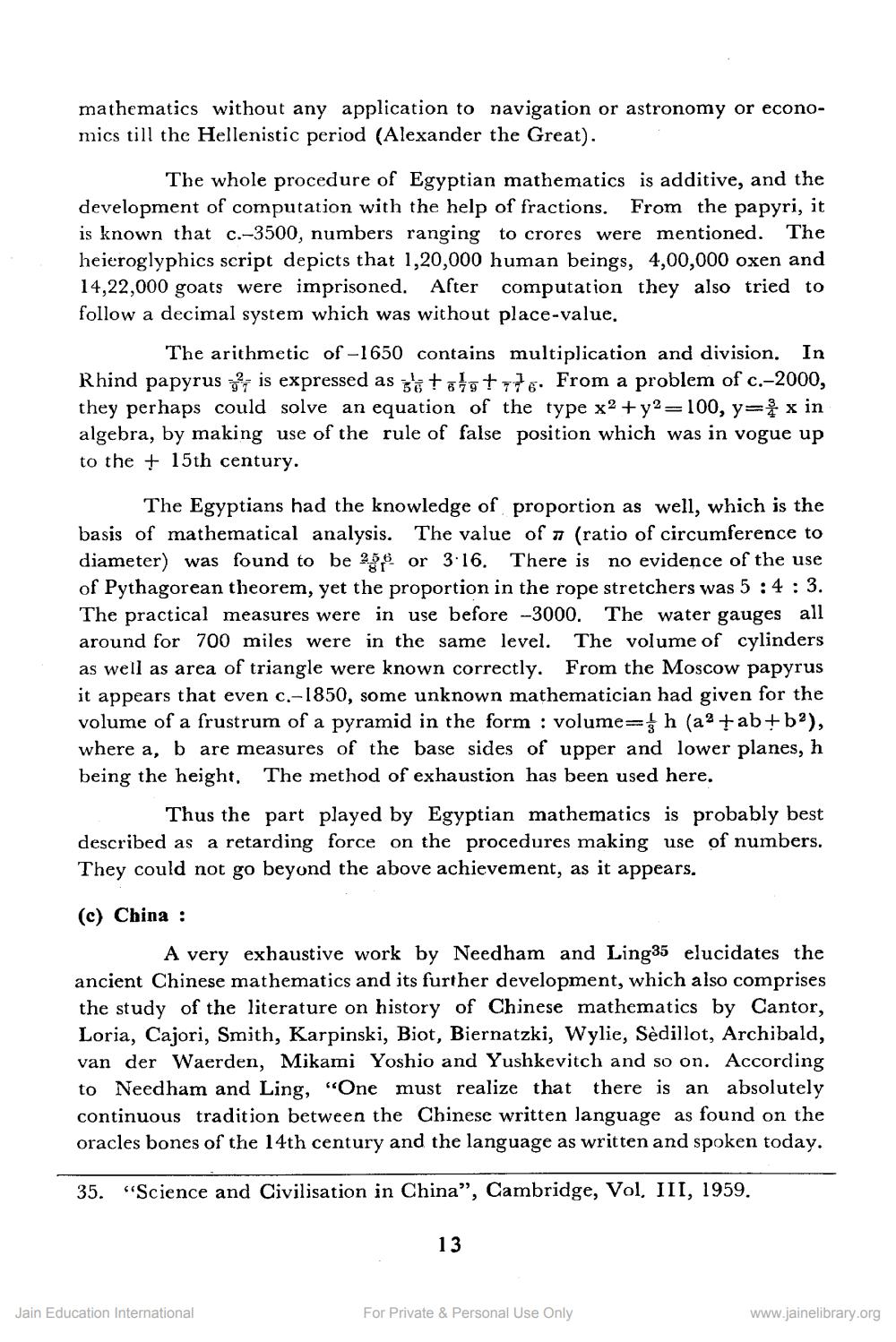________________
mathematics without any application to navigation or astronomy or economics till the Hellenistic period (Alexander the Great).
The whole procedure of Egyptian mathematics is additive, and the development of computation with the help of fractions. From the papyri, it is known that c.-3500, numbers ranging to crores were mentioned. The heieroglyphics script depicts that 1,20,000 human beings, 4,00,000 oxen and 14,22,000 goats were imprisoned. After computation they also tried to follow a decimal system which was without place-value.
The arithmetic of -1650 contains multiplication and division. In Rhind papyrus is expressed as. From a problem of c.-2000, they perhaps could solve an equation of the type x2+y2=100, y=x in algebra, by making use of the rule of false position which was in vogue up to the 15th century.
The Egyptians had the knowledge of proportion as well, which is the basis of mathematical analysis. The value of 77 (ratio of circumference to diameter) was found to be 25 or 3:16. There is no evidence of the use of Pythagorean theorem, yet the proportion in the rope stretchers was 5:4: 3. The practical measures were in use before -3000. The water gauges all around for 700 miles were in the same level. The volume of cylinders as well as area of triangle were known correctly. From the Moscow papyrus it appears that even c.-1850, some unknown mathematician had given for the volume of a frustrum of a pyramid in the form : volume= h (a2+ab+b2), where a, b are measures of the base sides of upper and lower planes, h being the height. The method of exhaustion has been used here.
Thus the part played by Egyptian mathematics is probably best described as a retarding force on the procedures making use of numbers. They could not go beyond the above achievement, as it appears.
(c) China:
A very exhaustive work by Needham and Ling35 elucidates the ancient Chinese mathematics and its further development, which also comprises the study of the literature on history of Chinese mathematics by Cantor, Loria, Cajori, Smith, Karpinski, Biot, Biernatzki, Wylie, Sèdillot, Archibald, van der Waerden, Mikami Yoshio and Yushkevitch and so on. According to Needham and Ling, "One must realize that there is an absolutely continuous tradition between the Chinese written language as found on the oracles bones of the 14th century and the language as written and spoken today.
35. "Science and Civilisation in China", Cambridge, Vol. III, 1959.
Jain Education International
13
For Private & Personal Use Only
www.jainelibrary.org




